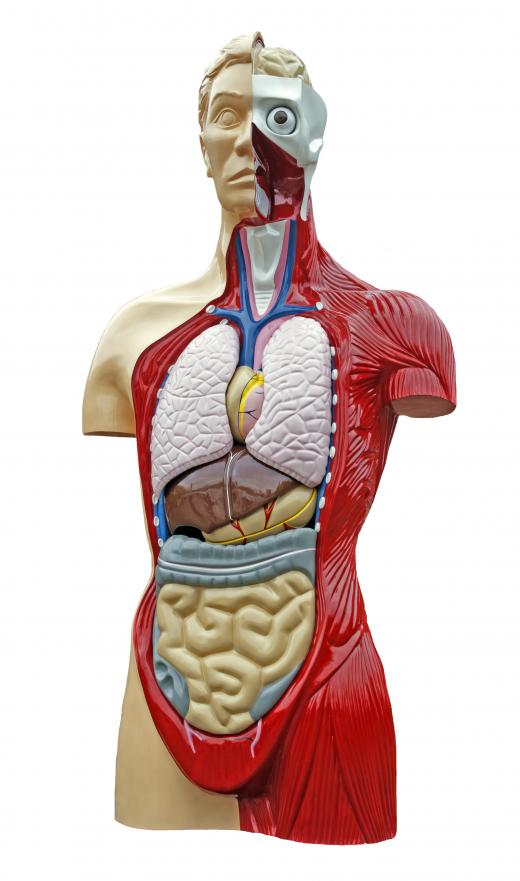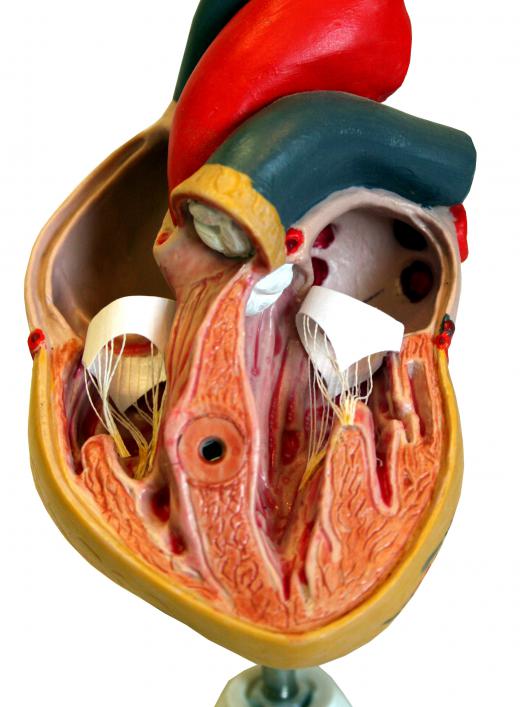What is Anatomy?
Anatomy is the area of biology that deals with the structure of plants and animals, usually on the scale of whole organisms and their major systems. Major divisions falling under the umbrella of anatomy include the visible structures and organs, the comparative study of related organisms, and growth and development. Bodily systems and their functions and anatomical disease states are also a part of anatomy. Sometimes included is histology, which is the study of the different types of tissues and their special cells. In animals, the field is also concerned with major systems such as the circulatory, digestive, and nervous systems.
Most commonly, the science of anatomy refers to the study of gross anatomy, which is the study of visible structures without the use of aids such as the microscope. This allows for the examination of the various body structures in terms of their entire size and shape, as well as their relationship to other structures. Less commonly, the term also refer to the anatomical study of smaller units like the cell. The study of various types of tissues often requires microscopic analysis to make meaningful comparisons between them. The more inclusive term morphology covers both macroscopic, or large-scale, as well as microscopic structures.

Anatomy has a number of subdivisions that deal with more specific aspects of bodily structures. One of these is the study of the development of organisms, which in animals can include the embryonic stage through maturity. Functional anatomy is the study of organs, their roles in the body, and their place in the body's major systems. Comparative anatomy deals with the anatomical relationship between animals that share similar structures, such as mammals.

Other subdivisions include pathological anatomy, which is the study of diseased organs and how they are changed in form or function. Sometimes the microscopic structures of the smallest unit of biology, the cell, are also included. Broader divisions having a longer scientific history include the animal, plant, and human branches of the field.
In anatomy, the visible structures of the body are related to their places in larger systems. For instance, the circulatory system includes the heart, blood vessels, and arteries. Male and female reproductive anatomy includes sexual organs such as the testes, penis, and vagina. Other systems are the muscular, skeletal, and respiratory systems. Anatomical studies are often paired with the related field of physiology, which deals more specifically with the function of organisms. Physiology also extends the study of anatomical structures to their biological processes.
AS FEATURED ON:
AS FEATURED ON:


















Discussion Comments
@Anna32 - Anatomy, as you read above, is more the study of the body's parts from a structural level. Physiology, on the other hand is the study of how the body's parts and systems work, both independently and interactively.
For example, if you were to look at a human anatomy diagram, you might gain a bit of understanding about the different organs, bones, and muscles in the body, but not necessarily what they do or how they work. For that information you would need to study physiology. Hope that helps!
OK, wait...I'm confused. I always thought anatomy and physiology were the same thing but the article says they aren't. How are they different?
Post your comments